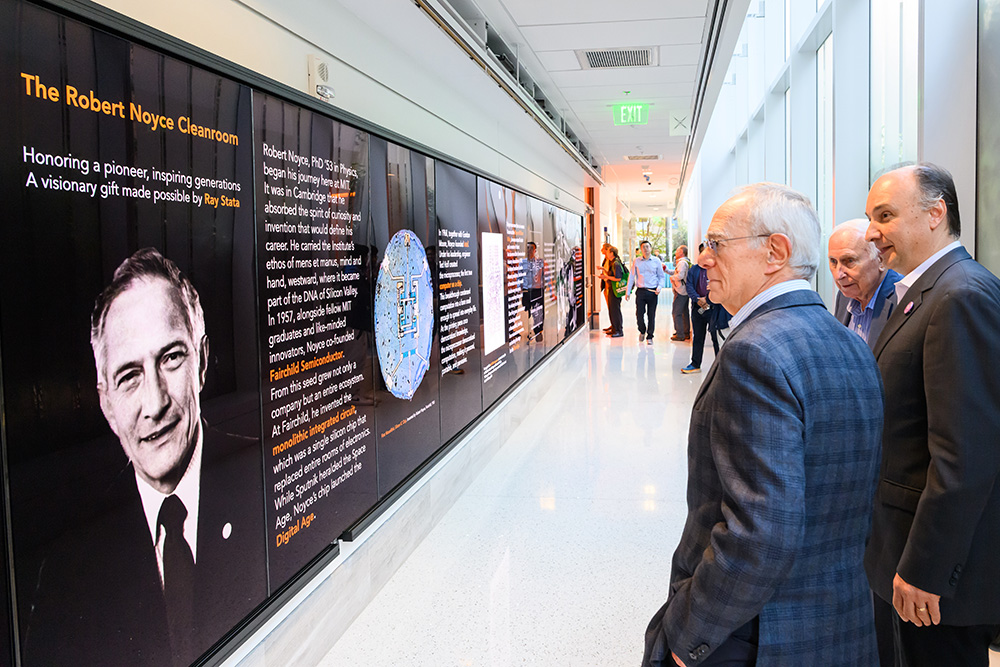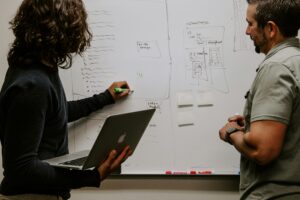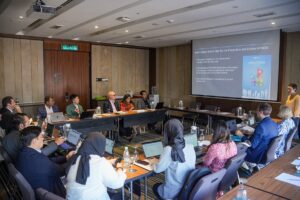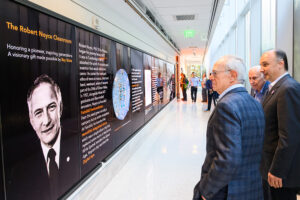
Nikon Z9 Camera
“MIT.nano is essential to making progress in high-priority areas where I believe that MIT has a responsibility to lead,” declared MIT President Sally Kornbluth at the 2025 Nano Summit. Her remarks set the tone for a day dedicated to exploring the transformative potential of nanoscience and nanotechnology across MIT’s strategic initiatives. The summit, hosted by MIT.nano, underscored the institution’s commitment to leveraging nanoscale science to tackle some of the world’s most pressing challenges.
The event highlighted the importance of collaboration across disciplines, the scalability of solutions from lab to market, and the grand-scale changes achievable through nanoscale innovations. “MIT.nano has truly set itself apart, in the Institute’s signature way, with an emphasis on cross-disciplinary collaboration and open access,” Kornbluth added, emphasizing the potential for nanoscience to drive significant global impact.
Collaborating on Health
The summit’s first session, led by Angela Koehler, faculty director of the MIT Health and Life Sciences Collaborative, delved into the intersection of nanotechnology and healthcare. Koehler posed a critical question: How can MIT build a community that addresses transformative health challenges? The session featured three pioneering speakers who shared their groundbreaking work in medicine.
Ana Jaklenec, a principal research scientist at the Koch Institute for Integrative Cancer Research, discussed her team’s development of single-injection vaccines. “MIT.nano was instrumental in helping us develop this technology,” she noted, highlighting the cross-industry application of techniques from electrical engineering to pharmaceuticals. Meanwhile, Giovanni Traverso, a gastroenterologist and mechanical engineering professor, drew inspiration from nature to design innovative drug delivery systems. Mirai Bio’s senior vice president, Jagesh Shah, emphasized the need for industry-academia collaboration to advance therapeutic delivery technologies.
Manufacturing: From Classroom to Workforce
The second session of the summit focused on MIT’s Initiative for New Manufacturing (MIT INM), which aims to bridge the gap between academia and industry. A. John Hart, co-director of MIT INM, emphasized the importance of understanding the global manufacturing landscape and preparing graduates to lead in this field. “It’s about getting people—our graduates who are budding enthusiasts of manufacturing—out of campus and starting and scaling new companies,” Hart stated.
Dan Oran, a PhD graduate and founder of Irradiant Technologies, shared his journey from student to entrepreneur, illustrating the challenges of moving innovations from lab to market. Elisabeth Reynolds, a professor of urban studies and planning, highlighted the difficulties in scaling prototypes to production, stressing the need for workforce development. John Liu, a principal research scientist, proposed creating a new worker type—the technologist—to bridge the gap between technicians and engineers in advanced manufacturing.
Bridging Ecosystems with Nanoscience
The summit’s final session, led by Benedetto Marelli, mission director for the MIT Climate Project, focused on the role of nanoscience in addressing climate change. Marelli stressed the interconnectedness of ecology, health, mobility, and other sectors in tackling climate challenges. “If we’re going to have a tangible impact on the trajectory of climate change in the next 10 years, we cannot do it alone,” he asserted.
Faculty speakers presented nanoscale solutions aimed at enhancing climate resilience. Michael Strano discussed his group’s work on converting waste methane and urea into renewable materials using nanoparticles. Desirée Plata highlighted the scaling of carbon dioxide removal systems, while Kripa Varanasi showcased innovations in agricultural spraying to reduce pollution and costs. These presentations underscored the link between climate initiatives and economic sustainability.
“The economic systems that we have today are depleting to our resources, inherently polluting,” emphasized Plata. “The goal here is to use sustainable design to transition the global economy.”
The Role of MIT.nano
MIT.nano plays a pivotal role in fostering innovation by providing shared access facilities for researchers to develop creative solutions to global challenges. “What do people do at MIT.nano?” asked Jorg Scholvin, associate director for Fab.nano. With over 1,500 individuals and more than 20 percent of MIT faculty labs utilizing MIT.nano, the facility is a hub for diverse research, from 3D transistors to art restoration.
The summit concluded with a tribute to the visionaries of nanoscience and an announcement by President Emeritus L. Rafael Reif. The MIT.nano cleanroom complex, made possible by a gift from Ray Stata, will be named the Robert N. Noyce (1953) Cleanroom, honoring Noyce’s contributions to the semiconductor industry.
“Noyce was a pioneer of the semiconductor industry,” said Stata. “It is due to his leadership and remarkable contributions that electronics technology is where it is today.”
As the summit drew to a close, Reif highlighted the legacy of MIT’s contributions to the semiconductor field and the potential for future breakthroughs. “MIT has educated a large number of remarkable leaders in the semiconductor space,” Reif noted. “Now, with the Robert Noyce Cleanroom, this amazing MIT community is ready to continue to shape the future with the next generation of nano discoveries.”






